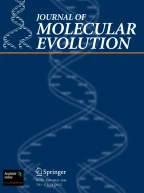148Accesses
72Citations
Abstract.
Long amino acid repeats are often observed in eukaryotic proteins. In humans, several neurological disorders are caused by proteins containing abnormally long polyglutamines. However, no systematic analysis has attempted to investigate the relationship between reiterations of particular amino acids and protein function, the possible mechanisms involved in the generation of these regions, or the contribution of selection in restricting their genomic distribution, in a large collection of wild-type proteins. We have used baker's yeast open reading frames to study these questions. The most abundant amino acid repeats found in yeast proteins are repeats of glutamine, asparagine, aspartic acid, glutamic acid, and serine. Different amino acid repeats are concentrated in different classes of proteins. Acidic and polar amino acid repeats are significantly associated with transcription factors and protein kinases, while serine repeats are significantly associated with membrane transporter proteins. In most cases the codon structures encoding the repeats at the gene level show a significant bias toward long tracts of one of the possible codons, suggesting that trinucleotide slippage has played an important role in generating these reiterations. However, many, particularly those encoding serine repeats, do not show evidence of slippage. The distributions of codon repeats within proteins and between coding and noncoding regions of the genome, and of amino acids between proteins with different functions, suggest that repeats of these kinds are subject to strong selection.
This is a preview of subscription content,log in via an institution to check access.
Access this article
Subscribe and save
- Get 10 units per month
- Download Article/Chapter or eBook
- 1 Unit = 1 Article or 1 Chapter
- Cancel anytime
Buy Now
Price includes VAT (Japan)
Instant access to the full article PDF.
Similar content being viewed by others
Explore related subjects
Discover the latest articles and news from researchers in related subjects, suggested using machine learning.Author information
Authors and Affiliations
Comparative Sequence Analysis Group, Medical Research Council Clinical Sciences Centre, Imperial College School of Medicine, Hammersmith Hospital, Du Cane Road, London W12 0NN, UK, , , , , , GB
M. Mar Albà, Mauro F. Santibáñez-Koref & John M. Hancock
- M. Mar Albà
Search author on:PubMed Google Scholar
- Mauro F. Santibáñez-Koref
Search author on:PubMed Google Scholar
- John M. Hancock
Search author on:PubMed Google Scholar
Additional information
Received: 3 March 1999 / Accepted: 26 July 1999
Rights and permissions
About this article
Cite this article
Mar Albà, M., Santibáñez-Koref, M. & Hancock, J. Amino Acid Reiterations in Yeast Are Overrepresented in Particular Classes of Proteins and Show Evidence of a Slippage-Like Mutational Process.J Mol Evol49, 789–797 (1999). https://doi.org/10.1007/PL00006601
Issue Date:
Share this article
Anyone you share the following link with will be able to read this content:
Sorry, a shareable link is not currently available for this article.
Provided by the Springer Nature SharedIt content-sharing initiative

